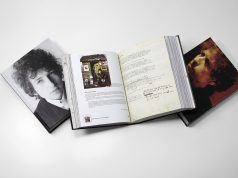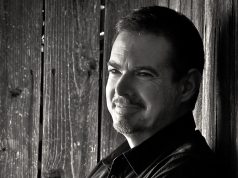
When Fairview High’s Paul Strode was a new science teacher in the early 1990s, he wasn’t ready for the challenge that a student brought to him when he taught evolution.
“In my first year, I had a student plop a stack of (creationist) pamphlets on my desk,” Strode says. “At the time I had no answer for him.
I couldn’t answer him when he said that the horse was obviously made for humans to ride. I didn’t have the understanding of evolution or the understanding of how science worked.”
Strode and Colorado School of Mines senior lecturer Matt Young’s new book Why Evolution Works (and Creationism Fails) addresses the common misconceptions regarding evolution and debunks the flawed ideas of modern-day creationists. Any teacher or person who reads this engaging treatise will be much better prepared than Strode was as a new teacher when confronted by creationists.
Apparently, there are an awful lot of creationists out there. In a recent Gallup poll done on the 200th anniversary of Charles Darwin’s birth in February, only 39 percent of Americans said they believed in the theory of evolution. A quarter of the population rejects Darwin’s theories outright, while the rest of America doesn’t seem to care.
Young and Strode are alarmed by how many people refuse to accept scientific facts. In the opening pages of Why Evolution Works, they explain how ignorance of the basics of evolution can lead to a health disaster. The overuse of antibiotics, in everything from livestock to fowl to treatment of minor infections has caused many bacteria to evolve into new antibiotic-resistant strains. Most notably, the malaria parasite has grown resistant to quinine and its derivatives.
“Creationism doesn’t exist in a vacuum,” Young said. “Creationism correlates with denying climate change, the Holocaust and that HIV causes AIDS. People don’t believe in a great many things that science has proven to be facts. The result is these people are dangerous. In South Africa, countless people died because the prime minister [Thabo Mbeki] denied the link between HIV and AIDS.”
Why Evolution Works uses a thorough explanation of how science works to help dismantle the arguments against evolution. It seems like something any halfway-educated person should know (how hypotheses, experimentation, observations and theories fit together), yet in Young’s and Strode’s hands, it’s a revelation.
“One of the misunderstandings is the process of science. Our explanations change as we learn more about nature,” Strode says.
“People think that it’s a weakness. ‘Oh, you’re wrong again.’ We are just gathering more information. Some information confirms your hypothesis, some adds a layer, and some contradicts it. Evolution is one of the most successful theories in all of science.”
Muddying the scientific waters are contemporary creationists that operate under the ruse of Intelligent Design. Writers such as Michael Behe and William Dembski assert that certain structures, like eyes, are too complex to have evolved from simpler systems. Behe admits, unlike many creationists, that earth is billions of years old and that all life has a common ancestor. However, he argues that the universe was “designed” for life.
Young and Strode take on each one of these points and expose the flaws in reasoning behind them. Dembski’s math is questionable and his view of probability is unnecessarily limited. Behe’s contention that the universe is designed is belied by a close examination of three jury-rigged features of human anatomy. The knee is terribly injury-prone, the scrotum is a strange solution to the problem of keeping sperm cool, and the eye is susceptible to glaucoma and cataracts.
“The human knee, the mammalian scrotum, and the vertebrate eye are far from perfect, but rather are merely the best evolution can do given the constraints of developmental genes and structures and functions already in place,” Young and Strode write. “Perhaps better designs could be envisioned, but evolution has had to work with what it had.”
“Intelligent Design is a deliberate attempt to get around the Supreme Court ruling that you can’t teach religion,” Young says. “They don’t make any claims about the identity of the designer. But it’s obvious what they are getting at.”
Although the history of creationism and the lessons in basic science provide great entertainment, the heart of Why Evolution Works is a brief but thorough look into the theory of evolution. Young and Strode look at the theory from several different angles, including the dating of the earth’s beginning, new genetic research and how embryos of different species can show us their common ancestors.
They describe these normally dense scientific topics in short chapters in a conversational tone. Each chapter has a conclusion that summarizes the information and there are several boxes with quirky evolutionary stories.
“I wanted to write a book for the high school level,” Young says. “Our publisher wanted it to be for the college market. We’d like to see everyone read it. We are also aiming the book at the fence-sitters. People who think some of Intelligent Design makes sense. We want to show them that science trumps dogma.”
Why Evolution Works directly addresses the question of whether science and religion can co-exist. Strode and Young tell the story of two brothers-in-law who traveled the path from young earth creationists (they believed the earth was only 10,000 years old and Noah’s flood literally happened) to evolutionists.
Stephen Godfrey was studying to be a paleontologist when he discovered fossilized footprints of animals in sedimentary rocks. If all the fossils were deposited during Noah’s flood, how could footprints exist? His brother-in-law, Christopher Smith, changed his mind while taking a course on the interpretation of the Old Testament. He began to see the bible’s Genesis chapter as poetry and not as literal history. Godfrey and Smith maintain their Christian beliefs.
However, many fundamentalist Christians would probably find Young’s and Strode’s words chilling as they try to reconcile their beliefs.
“Any belief, religious or other, that denies known scientific fact is seriously in need of reconsideration,” they write. “Religion and science are not incompatible, but some religious beliefs are at odds with facts and need to be reevaluated. Unhappily, rather than reevaluate their beliefs, proponents of such religious beliefs have set forward the pseudo-scientific claims that are a major concern of this book.”
Researching and writing Why Evolution Works has helped solidify Strode’s own understanding of the issues that he deals with as a high school teacher.
“I recently had a parent at Boulder High School who said, ‘I heard you teach biology with evolution. Do you teach other theories? Like creationism.’ I said, ‘I teach science. If you are interested I have a book coming out on the subject.'”
For More Info:%uFFFD
Paul Strode and Matt Young will sign and speak about Why Evolution Works at the Boulder Book Store on Oct. 14 at 7:30 p.m. 1107 Pearl St., Boulder, 303-447-2074.














